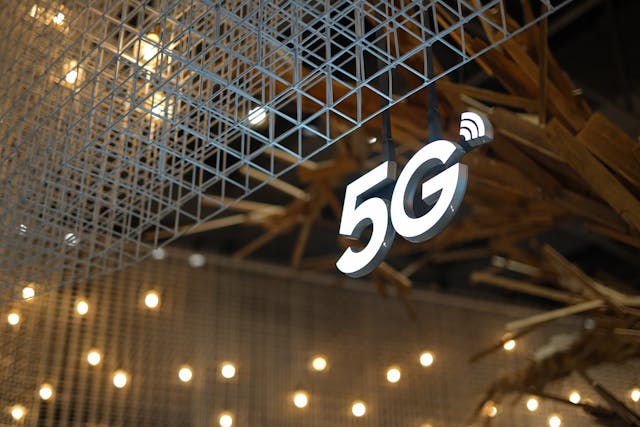The 5 Latest Trends in 5G and 6G Technology

5G first properly emerged in 2019 and it was hailed a groundbreaking technology at the time. It promised to revolutionize the way we connect, communicate, and interact with the world around us. And many people would agree that it’s lived up to expectations. What’s more, 5G still has amazing potential, even as 6G is starting to emerge. So what are the latest trends in 5G and 6G technology?
For people who don’t know much about 5G (other than the fact they might now see ‘5G’ connections pop up on their smartphones), 5G means the “fifth generation” of wireless technology. It’s a step up from 4G, which some techies call LTE (Long-Term Evolution) networks. This is what you probably use on your smartphones and other devices. One way to look at 5G is like a really speedy internet highway that allows data to travel at unprecedented speeds. It means you can download movies, games, and large files much quicker than before, and your online videos hardly ever buffer. If you’ve noticed your smartphone has sped up over the last few years, this is what 4G and 5G has been doing behind the scenes.
It’s not just about speed, though. 5G also reduces lag, making everything from video calls to online gaming more smooth and responsive. It can connect more devices at once. Many people say this is the start of widespread smart cities and IoT (Internet of Things) applications, where everything from fridges to streetlights can be online and communicate.
Does this all sound a bit futuristic to you? Well actually, this technology is moving faster than you think. And that’s before 6G comes along, which is due in around 2030. Imagine if your internet wasn’t just faster but could predict what information you needed before you even asked. That’s the promise of 6G. While 5G is like a supercharged internet highway, 6G promises to be the teleportation of the internet world. It may sound a little like Start Trek or Stargate, but this is how many industry experts are describing it. When it’s ready in around the year 2030, 6G will not only increase speeds unimaginably but also bring new technologies that can integrate with artificial intelligence to make decisions in microseconds. This means everything from self-driving cars to personal assistants could operate with almost no lag, making our lives smoother and more connected. It’s like moving from sending letters to instant messaging in terms of communication speed and efficiency.
This is all very exciting stuff. So what are some of the main trends in 5G and 6G development happening right now?
1. Enhanced Mobile Broadband (eMBB)
Enhanced Mobile Broadband (eMBB) is set to deliver dramatically faster data speeds and more reliable mobile connections. This technology aims to support the burgeoning demand for high-definition video streaming, virtual reality (VR), and augmented reality (AR) applications. With eMBB, users can expect an immersive experience with seamless connectivity, making virtual meetings and online gaming more engaging than ever. This leap in bandwidth and speed is crucial for supporting the next generation of digital experiences, driving innovation in content creation and consumption.
2. RF Analyzers in 5G and 6G Development
RF analyzers have become increasingly relevant in the development and deployment of 5G and 6G technologies. These sophisticated tools are critical for optimizing the performance of radio frequency (RF) components and ensuring compliance with global standards. An RF analyzer helps engineers identify and rectify issues such as signal interference, bandwidth limitations, and power inefficiencies. Their use is essential not just for the initial rollout of 5G and 6G networks but also for their ongoing maintenance and upgrade, guaranteeing that these cutting-edge networks can deliver on their promises of speed and reliability.
3. Massive Machine Type Communications (mMTC)
Massive Machine Type Communications (mMTC) is a technology designed to enable large-scale IoT deployments. mMTC supports connectivity for a vast number of devices, sensors, and automation tools with minimal power and bandwidth requirements. This trend is pivotal for smart city initiatives, agricultural monitoring, and industrial automation, where thousands of devices need to communicate simultaneously. By ensuring efficient, wide-scale device connectivity, mMTC paves the way for more sophisticated and interconnected ecosystems in various sectors.
4. Ultra-Reliable Low Latency Communications (URLLC)
Ultra-Reliable Low Latency Communications (URLLC) is a key trend aimed at supporting critical applications that require instant response times and dependable connections. URLLC is vital for autonomous vehicle communication, remote surgery, and emergency response systems, where a delay of even milliseconds could have significant consequences. By reducing latency to near real-time and increasing reliability, URLLC opens up new possibilities for technology to play a vital role in safety-critical applications.
5. Integration of AI and ML with Network Technologies
The integration of Artificial Intelligence (AI) and Machine Learning (ML) with 5G and 6G networks is a significant trend that promises to revolutionize how these networks operate and are managed. AI and ML can analyze vast amounts of data from network traffic in real-time, predicting demand patterns, detecting potential issues before they affect users, and optimizing network performance. This trend not only enhances user experience by making networks more efficient and reliable but also lays the groundwork for autonomous networks capable of self-healing and self-optimization.
5G and 6G shows how far we have come in telecommunications. The electric telephone was only invented in the 1870s! Now we’re talking about instant, reliable connectivity that underpins every aspect of our digital lives. There are immersive AR/VR experiences that keep getting better, massive IoT ecosystems driving the autonomous vehicle revolution, and pioneering ultra-reliable communication for critical applications in medicine, defense and industry. With AI and ML totally exploding too, with these networks promises smarter, self-optimizing systems that enhance efficiency and user experiences. As the 2030s draw nearer too, the anticipation for 6G and its potential to transform technology into a seamless, intuitive extension of human capability grows.




